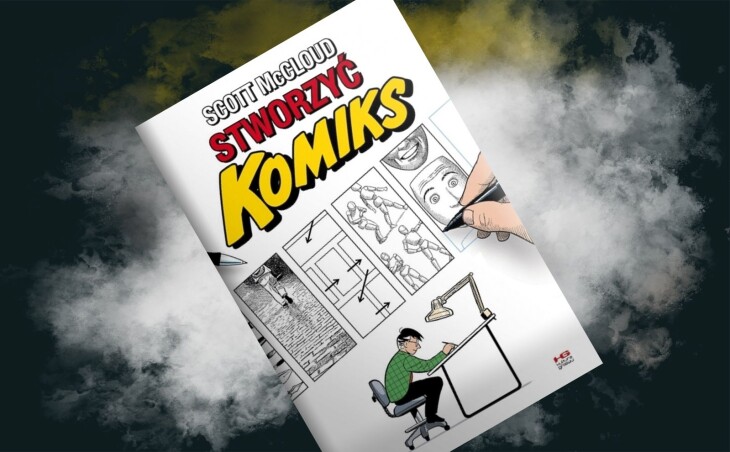People who devote their time to developing drawing skills face the question at least once in their lives: “how about how to draw a comic?” Scott McCloud addresses such dilemmas with his publication of general principles on this topic.
Creating a Comic is a rather unusual publication from the Kultura Gniewu publishing house . On the one hand, the textbook is simply stuffed with useful substantive knowledge and exercises for developing artists, on the other – a great drawing work. More than 260 pages contain seven sections filled with subsections ( Writing with pictures , Stories for people , The power of words , Creating the world , Tools, methods and technology , Your place in the comic , Create a comic ) focused on presenting the most important issues in the author’s opinion related to the start of work with picture stories.
A comic book about a comic
In the publication by McCloud, an extremely accessible and inventive form of conveying the knowledge possessed by the creator deserves attention. Talking about comics in the form of pictures makes the absorption of new information extremely fast, and additionally sounds like something uncomplicated (although there is a full package of very specific knowledge here!). The reading was also very well thought out and planned. McCloud begins with an introduction that systematizes the general knowledge and breaks it down into detailed components. In order not to be groundless, the author illustrates with examples or even whole scenes each of the topics he discusses.
Comics are not only drawing
As for the topics covered in the book, in the first part we learn how important it is to choose the moment, the frame, the image itself and the words, and then the transition from scene to scene. The second chapter focuses on character creation and general drawing of all kinds of creatures. The third part is devoted to the subject of texts, statements, speech bubbles and connections between the image and the written word. The next chapter is a journey through different worlds and processes that help cartoonists create them in an attractive way. The creator did not forget about a completely separate section on tools and working techniques (which for me personally was the most interesting), so you can expect a whole package of different tips. At the end, there is a list of (again) quite general tips related to creating comics, finding your style and drawing on existing patterns. It is worth adding that the author throughout the publication also uses examples of drawings by various artists (always placing their data and sources). The last pages are an extensive bibliography and recommended reading for those who want a greater package of knowledge, data on copyright and a retail index of entries (so that you can search for what you want at any time).
A comic book creator’s bible?
This was the first time I had contact with a publication of this type, but I am not afraid to say that it is a kind of compendium, which has been thoroughly thought out and compiled. Young artists looking for substantive support will use them more than once on their way to being the creator of picture stories. It is worth buying much more than any mass manuals on how to draw something.
Nasza ocena: 10/10
With this book, you can actually try to create your own comic.PLOT: 10/10
Characters: 10/10
GRAPHIC DESIGN: 10/10
EDITION: 10/10

